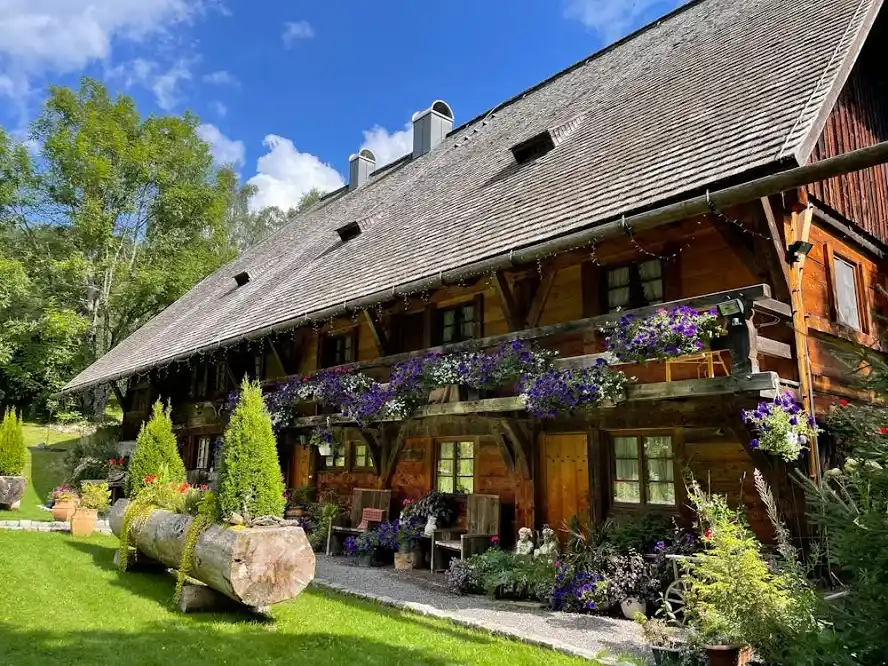Habitat destruction poses one of the most critical environmental challenges of our era, threatening countless species and the ecosystems they depend on. Wildlife populations have plummeted by a catastrophic 73% in just 50 years (1970-2020), according to WWF’s Living Planet Report 2024. As urbanization, deforestation, and agriculture expand, the delicate balance of nature faces disruption, leading to biodiversity loss and climate instability. But hope remains within reach.
Approximately 15 billion trees are cut down each year, while 80% of global forest species lose their homes to land clearing for farming, mining, and development. By adopting sustainable techniques and conservation practices, we can work toward preserving our planet’s natural habitats while meeting human needs. From innovative farming practices to community-led conservation efforts, small actions create ripple effects of positive change.
This guide explores eight powerful and practical ways to combat habitat destruction and environmental degradation, showcasing solutions that benefit both ecosystems and society. Whether you’re an environmental enthusiast or someone looking to make a difference, these strategies can inspire meaningful action.
Transform Your Property into a Sustainable Biodiversity Haven
Transforming your property into a haven for biodiversity represents a powerful way to combat habitat destruction. Planting native trees, shrubs, and wildflowers attracts pollinators and wildlife, creating mini-ecosystems that support local species. You can engage experts in landscaping and sustainable design to develop strategies that align with local ecological needs. For instance, you can discover Mountaineer Land Solutions to get practical solutions that enhance your property’s natural beauty. They specialize in creating environmentally friendly landscapes that support biodiversity while reducing environmental impact.
Incorporating features like rain gardens, permeable pathways, and organic gardening practices enriches your property’s ecosystem further. These elements help manage stormwater runoff, prevent soil erosion, and create habitat corridors for wildlife movement. By taking these steps, your property becomes more than just space—it transforms into a thriving sanctuary that contributes to conservation efforts while offering you a serene, natural environment to enjoy.
Adopt Sustainable Agricultural Practices
Agriculture drives significant habitat destruction, but sustainable farming methods can reverse this trend and restore ecological balance. Techniques such as crop rotation, agroforestry, and permaculture minimize land degradation while supporting biodiversity. Organic farming methods reduce harmful chemical use, protecting soil health and nearby ecosystems.
By integrating cover crops and contour plowing, farmers can reduce erosion and maintain natural habitats within agricultural landscapes. These practices improve yields while ensuring long-term environmental stability. Additionally, supporting local farmers who use eco-friendly methods encourages wider adoption of sustainable practices, making agriculture a force for conservation rather than destruction.
Restore Degraded Ecosystems Through Rewilding
Rewilding involves reintroducing native plants and animals to degraded areas, focusing on restoring natural processes rather than intensive management. This approach helps regenerate habitats, improve biodiversity, and strengthen ecosystem resilience against climate change. Projects such as reforesting deforested areas or creating wildlife corridors can significantly impact ecosystem health and species recovery. Community involvement plays a crucial role in these efforts, ensuring restoration aligns with local needs.
With careful planning and monitoring, rewilding can bring back keystone species and create self-sustaining habitats. Success stories worldwide prove that even heavily damaged areas can recover, becoming vibrant ecosystems once again. The approach emphasizes natural processes like dispersal, trophic complexity, and ecological disturbances as critical components for resilient ecosystems.
Promote Urban Green Spaces and Vertical Gardens
Urban development leads to habitat loss, but cities can become part of the solution. By creating green infrastructure such as parks, rooftop gardens, and vertical forests, urban areas provide refuge for wildlife while improving air quality and reducing urban heat island effects. Native plants should be prioritized in these spaces, as they support local biodiversity without requiring extensive maintenance.
Community-led initiatives can transform unused plots into thriving green oases that benefit both wildlife and residents. These efforts offer recreational opportunities and improve mental health. As cities grow, integrating green infrastructure into urban planning becomes essential to create a balance between development and nature conservation.
Support Community-Led Conservation Efforts
Local communities often serve as the best stewards of natural resources, possessing a deep understanding of their environment and ecosystems. Empowering these communities through education, funding, and policy support leads to effective conservation outcomes. Initiatives like community-managed forests or marine protected areas have shown remarkable success in preserving habitats and preventing further degradation. Partnerships with NGOs and government agencies strengthen these efforts.
By involving communities in decision-making and ensuring they benefit economically from conservation, long-term habitat protection becomes more viable. Supporting these grassroots movements represents one of the most sustainable ways to combat habitat destruction globally.
Use Sustainable Construction Techniques

The construction industry contributes significantly to habitat destruction, but sustainable building practices can mitigate environmental impact. Using eco-friendly materials like bamboo, recycled steel, or reclaimed wood reduces the need for extracting raw resources from natural habitats. Green building designs, such as energy-efficient layouts and rooftop gardens, lessen environmental footprints while improving quality of life.
Builders can minimize site disturbance by planning around existing vegetation or incorporating natural features into designs. Governments and developers must adopt these practices to create infrastructure that meets human needs without compromising natural habitats and biodiversity.
Reduce, Reuse, and Recycle to Lower Resource Demands
Overconsumption of natural resources drives habitat destruction, but adopting a circular economy mindset can help preserve ecosystems. Reducing waste, especially single-use plastics, minimizes pollution in natural areas. Reusing items extends their lifecycle, reducing demand for raw materials and habitat conversion.
Recycling ensures valuable resources are recovered rather than discarded, reducing pressure on natural ecosystems. Supporting a circular economy, where products are designed for reuse or recycling, amplifies these efforts. By making sustainable choices in daily life, individuals can lessen pressure on ecosystems and help preserve habitats for future generations.
Advocate for Stronger Environmental Policies
Policy changes at local, national, and international levels can have a massive impact on preventing habitat destruction and promoting conservation. Advocating for laws that protect critical habitats, regulate industrial activities, and promote sustainable practices remains vital. Support organizations that lobby for stronger environmental protections or participate in campaigns that raise awareness about habitat loss.
Additionally, encouraging governments to enforce existing conservation laws ensures they achieve intended outcomes for wildlife protection. By voting for leaders who prioritize sustainability and engaging in grassroots movements, individuals can influence systemic changes that safeguard the planet’s natural habitats for future generations.
Combating habitat destruction requires collective action and sustainable choices across all sectors of society. By adopting techniques like rewilding, sustainable agriculture, and eco-friendly construction, we can protect and restore vital ecosystems. Small, intentional steps—such as enhancing your property to support biodiversity or advocating for stronger environmental policies—contribute to larger conservation goals.
Every effort, no matter how small, helps preserve the planet’s natural beauty and the countless species that depend on healthy habitats. Together, we can create a harmonious balance between human development and nature conservation. Let’s take responsibility for our actions and embrace sustainable practices to ensure a thriving planet for generations to come.


